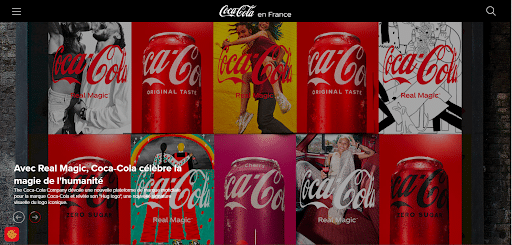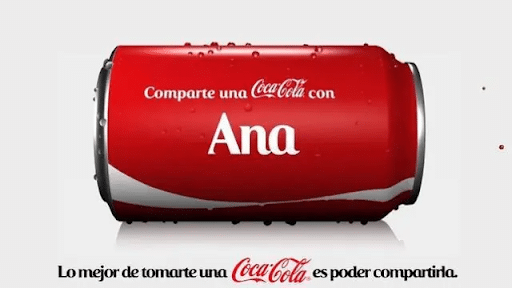While translation and localization services might seem similar at first, there are key differences worth knowing if you’re managing multilingual marketing campaigns. For starters, translation is just one type of localization; and localization is far more complex.
While translation focuses on written words, localization also involves the layout, formatting, channel, visual elements and cultural references of the messaging you’re trying to adapt.
We’ll delve deeper into the key differences below, but first, let’s explain why translation and localization are so important for effective localized marketing.
See also: Localization strategy: Your guide to engaging a global audience
Why are translation and localization services key to effective marketing?
When managing multinational campaigns, translation and localization services are essential to reaching local audiences.
First off, people much prefer to communicate in their native language. In fact, did you know that 90% of Internet users in Europe prefer to access websites in their own language? And with 24 official languages across the continent, effective marketing in Europe and worldwide involves high-quality localized translation.
That’s why the world’s top brands like AirBnb, Netflix and Coca-Cola—just to name a few—invest heavily in both services.
According to one of our podcast guests, Bertrand Serrano, global marketing director at Danone:
“You don’t speak to people in Russia like you would to people in Brazil. Everything has to be adapted to the local markets, from the content to the channels. This is what we are after.”
Localization and translation are also key for multilingual website SEO, as people are more likely to search for something in their own language. It also helps you connect with your audience, particularly young people, when you’re speaking the local lingo.
“I’m Brazilian so I’ll probably Google something in Portuguese before I search something in English, and a lot of people don’t speak English. So in those countries, it’s just easier to search for information in your own language.” – Allan Formigoni, Lisbon-based content and email marketing manager at WeTravel.
See also: Global vs. local social media accounts: Which one’s right for your business?
What is translation?
Simply put, translation converts written words from one language into another. While marketing translation should never be a literal conversion, the primary goal is to convey the exact same idea in the target language as accurately as possible—not necessarily as impactfully.
However, good translation agencies will still incorporate some form of adaptation to ensure that the same meaning is expressed while sounding as natural as possible.
Machine translations work well as a starting point when converting text from one language to another, but should never provide the final copy. It’s always best to get a human involved, even if you’re merely translating without the need for localization.
See also: What is creative translation?
What is localization?
Content localization doesn’t only convert words but also meaning, emotion, channel, culture, visual elements and context. It’s a much more comprehensive process that addresses cultural and non-textual components.
Localization makes the content feel familiar to the target audience. It involves relocating the language to another region and making the audience feel like it was created just for them, in a way they can relate to.
See also: Website translation and localization: 7 key steps
If you’re entering a new local market, download our practical worksheet to ensure your brand’s content strategy resonates with your target audience.

Get your free guide by filling in the form below!
5 differences between translation and localization services
Here are five key differences to consider when hiring localization or translation services.
1. Translation is the starting point
Translation is a type of localization, just one piece of a much bigger puzzle. Localization encompasses various techniques to make your content more relatable across global audiences.
When localizing your content to a region with a different language, you’ll likely start with translating the content. It might make sense if you do; it might not. If it doesn’t, then you’ll need to employ localization techniques.
In short: Translation alone is rarely enough to effectively reach your customers in another country. That’s where localized translation—aka localization—comes in.
2. Localization involves more than words
Localization doesn’t just involve written text but also layout and formatting. It even consists of using images that relate to the audience that you’re marketing to. That’s why you may need to use different images to target different markets in the same campaign for the same brand.
“Images tell a story, and they can tell a different story in different markets—you need to make them resonate with your users.”
– Anne-Sophie Delafosse, UK-based localization manager at Deliveroo
See below differences in images used on the Coca-Cola websites in France (left) vs. Finland (right):


Different languages might also call for changes in formatting and layout.
For example, English reads from left to right, but Arabic, Hebrew, and other languages read from right to left. Some languages may require more or less words than others, which means you’ll have to play around with the layout of ads.
Localization also considers units of measurement, currency units and date formats. Website localization, particularly ecommerce websites, considers local laws and payment gateways.
See also: 5 ways to ensure a quality localization—even if you don’t speak the language
3. Localization doesn’t always involve two different languages
Some languages are spoken in several different regions, which is why localization factors in the language and country you’re targeting.
For example, you can localize marketing campaigns from the US for a UK market. While both are in English, you may need to adapt certain messages or images to better reflect the UK market, including:
- The spelling: z’s become s’s and o’s become ou’s
- The different names for things: cookie (US) vs biscuit (UK)
- The different expressions, idioms and cultural references
- The different date formats, currency units and imperial vs metric measurements
The same can be said for language variants in Spanish, French and Portuguese. Localized content for Mexico would be different from localized content for Spain. Just like how French in France is different from French in Canada and Brazilian Portuguese uses different wording and grammar from Portuguese spoken in Portugal.
See the translation example below with the use of “Para quem você compra?” on the Adidas Brazil website:
While on the Adidas Portugal website, the same sentence is “Para quem estás a comprar?” Both ask, “Who are you buying for” in Portuguese, but the grammar is slightly different.
4. Localization meets cultural differences
Localization incorporates factors that can apply to culture, icons, visuals, etiquette, humor, symbols and social values, among other nuances.
It might not always be obvious, but sometimes just slight changes in how you say something or the visuals used in advertising campaigns make a huge difference.
In a podcast episode with Gaston Tourn, he spoke about the importance of understanding cultural differences when marketing. This was particularly relevant in one of his previous roles as the chief marketing officer at dating app, Badoo:
“When you live in EMEA, I think you become really aware of how important cultural nuances are to do amazing marketing. It’s not the same launching a campaign for a product like dating apps. Dating is so embedded in cultures and is different in the Middle East compared to dating in Spain or in the UK, which is also completely different than in the US.”
See also: Content marketing in Spain vs. the US: 9 key differences
Another great example of localized marketing campaigns meeting cultural differences is the “Share a Coke” campaign from Coca-Cola, which Euan Brown spoke about in a podcast episode.
The campaign first launched in Australia in 2011, and involved changing the traditional wrapping around the Coca-Cola bottle to say ‘Share a Coke with…’ and a popular name. Each country that used the campaign localized it to feature popular local names.
Below is an example of the campaign in Spain, featuring one of the most common names:

Sometimes, it’s small touches. For example, when we localized an English social media post with a recipe for Too Good To Go into Swedish, we recreated the Swedish caption, adapting to local cultural references and finding clever ways to showcase the message to the Swedish audience.
See below the Swedish post and check out our work sample here.

5. Localization is more emotive, while translation is more technical
Translation suits technical subjects where you don’t want to get the literal meaning wrong. It works for industries like law, science, research, finance and medicine. If something needs to be standardized, like educational material, translation is often best.
But when your content needs to convey emotion, localization is far better suited.
“When it comes to localization, you don’t just translate a text. You have to actually catch all those nuances and talk in the language of your audience. If it’s more of a laidback audience, and you describe a restaurant or something, then you use a certain language. And if you talk in any technical terms, you use a different language. The text in itself could be fairly similar, but the nuances will be different.”
– Sorana Duca, London-based purposeful brand calibrator
For example, we translate a global magazine for sustainable energy company EDP. Every quarter, they launch a new issue of their global corporate magazine, edpON, which we translate from Portuguese into English. The technicality of the text requires more translation than localization.


Create localized content that resonates with your global audiences
With fully localized content, companies can ensure that their experiences resonate with their audience, even if they speak an entirely different language.
Are you looking for translation or localization services?
At VeraContent, we offer both localization and creative translation. While translation and localization are different, they do support each other. You get elements of language localization in translation and vice versa. Working with localization and translation agencies helps you better understand your target audience as well as create content that resonates with them.
“When it comes to localization, I use companies that are located in that area because they know best. They have the tone of voice and will bring that authenticity to your content. You have to hire the right people. You can’t do everything yourself.”
– Sorana Duca, London-based purposeful brand calibrator
Contact us today to find out if you qualify for a Free Content Consultation.


